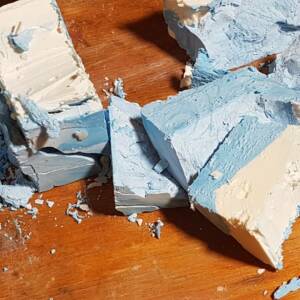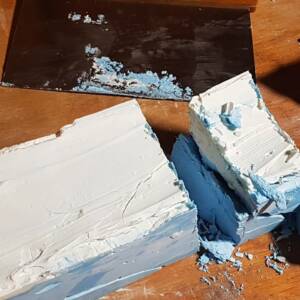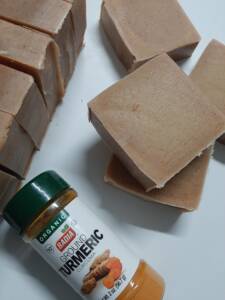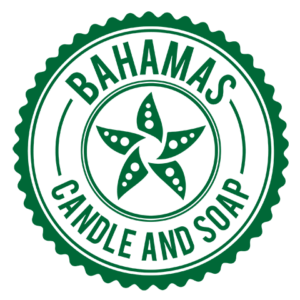Making soap can be a relaxing event, especially when you have an idea in your head and cant wait to see the final product. Although it can be relaxing it is serious business. Calculations must be as precise as possible else you could end up with something totally unexpected and ask the question what makes homemade soap crumble?
This happened to me when I finished making a batch of soap as I went to cut it, it all began to break down in to chucks as if it was extremely dry. Why is my homemade soap crumbling? Homemade soap will crumble or break apart if your soap mixture is lye heavy. That is to say more lye than oils to convert into soap. This can cause the soap mixture to accelerate trace and dry out quickly without the moistness of the oils and water.
Its a curse and a blessing that we often have to learn things the hard way. This scenario is no different as I’m speaking from personal experience and in hind sight did research to find out what went wrong. I will hopefully help you avoid this situation by giving you my story and a few pointers to avoid that will most likely make your soap crumble.
Where did I go wrong? My story
My story is a unique on in that I was excited to try a new technique but I was also tired and not very focused. Needless to say that combination did not work well this day.
As usually I planned my soaping technique to ensure I have all my tools. Then thought it through in my mind on what I needed to do. It was my first time making a layered soap so I wanted to try this technique of a thicker trace followed by a thinner medium trace soap batter on top.
As far as I was concerned everything was going along smoothly but for some reason I just did not pick up on one major mistake I made from the beginning.

In this case I think I may have been a bit to tired and doing more things that I should have been doing. Not only was I designing one soap while planning on working on another. Somehow I got the data mixed up and pressed the wrong button on the scale.
Without checking properly I some how inadvertently changed my measurements from ounces to grams. Just looking at the number and not the measurements I poured my oils. Unfortunately my lye was already measured out in ounces. Needless to say it felt off but I didn’t really know why but as soon as I added my lye to the oils… I knew for sure. It was way too much lye for the small amount of oils.
I was new to the soaping skills and this was a new recipe and technique. I wasn’t sure what to expect. Anyway to cut a weird story short, the moment I added the lye to the soap it just went straight to medium trace. I wasn’t sure if this was supposed to happen or not but I knew I had to pour soon. So I continued with the layer technique barely getting all the batter in the mold in the end in a thick state.
Within less than an hour the soap was hard as if it was made four weeks ago. I wasn’t sure what to do so I left it in the mold overnight can came back to cut it. It was like breaking chucks of chocolate that has been in the freezer. Hard and crumbly. Ruined… all ruined and at the time I did not know why.
As usual I kept a journal of all my soap recipes so I went over it and realized that it called for far more oil than I had in there. Why did I have so little oil? After inspecting my tools I noticed on my scale it was not set to ounces but grams. That’s just ridiculous. This prompted me to research the matter further and I came up with four reasons why your soap may crumble and break apart.
Excess Lye will cause your soap to crumble.
As you know by now this is what caused my soap to break apart. I added an excess of lye to a small amount of oils. This resulted in accelerated trace and a super hard bar with no moisture hence leading to its crumbly state.
The purpose of lye dissolved into a liquid like water is to allow for the chemical process called saponificaiton to take place that converts oils into what we know as soap. The water content along with the oils make the soap moisturizing due to the production of glycerin in handmade soap.

When you have too little lye in your mixture your soap will come out slimy and closer to oily than cleansing. The opposite happens when you use too much lye. Your soap will covert all the oils to soap and the remaining lye will continue to remove all moisture from the soap.
This process causes the soap to be dry and brittle. This is what causes your soap to crumble when you have too much lye in your soap recipe.
To avoid this use a lye calculator that will help you determine how much lye is needed to convert the type and amount of oils in your soap mixture to actual soap. Remember that not all recipes are the same especially when the mold sizes are different.
Try not to use some one else recipe unless you are able to verify the volume of your mold and calculate the amount of oils, water and lye to use.
Excess dry additives will cause your soap to crumble.

Additives can add an exiting look and feel to your finished soap. These additives can range from being a colorant to an exfoliant.
Activated charcoal is considered to be an additive, clay, oatmeal, poppy seeds and the like are all additives that you can use to either color or use an abrasive material to exfoliate your skin. The problem arises when you use certain additives such as clays such as kaolin or bentonite clay.
Although they have good properties the actual clay can cause the forming soap not to adhere to itself fully. The clay will not allow the soap to form properly hence breaking apart when you cut it or even try to use it in the shower.
The same can happen with too much poppy seeds or even oat meal. If too much is added it will reduce the performance of your soap and make it crumble. I have once added too much activated charcoal to a soap in order to make it darker but all I managed to do is reduce the effectiveness of the soap to lather.
Adding too much sodium lactate or salt to your soap batter.
Yes salt… Sodium lactate is actually a derivative of lactic acid. In a sense they are almost the same thing but just not quite.
This is a little trick that some soap makers use to help their soap harden faster or just to unmold quicker. Soduium lactate is added to the soap mix for this specific reason while others may use actual salt to create a harder bar of soap.
Either way it will make your soap harder. If you use too much it will also dry out your soap and hence cause it to cruble.
